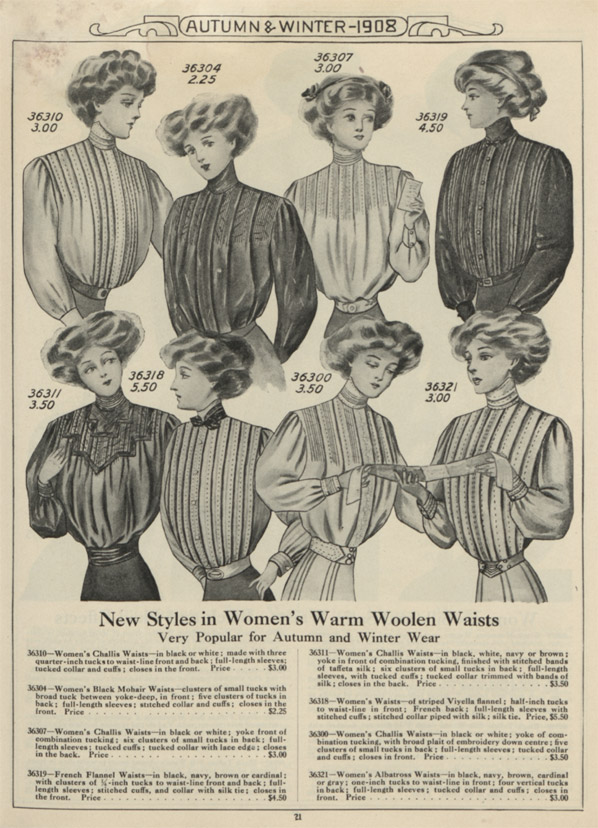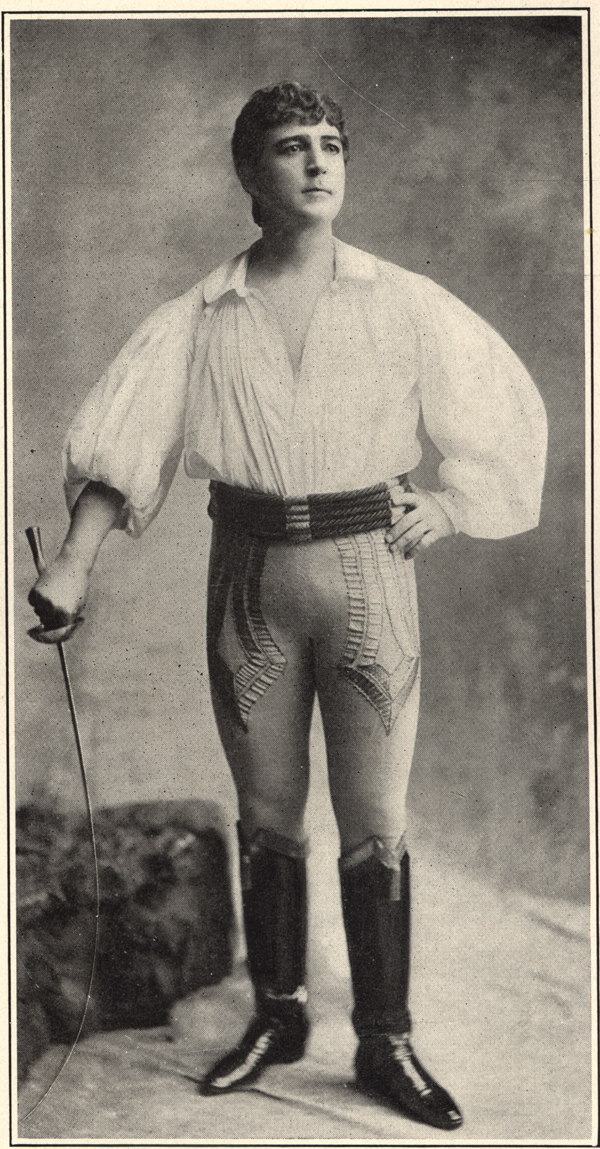 |
| 1907. Morse-Made Clothing Catalog {Source} I guess these men sport a sort-of pompadour style. |
- A woman's hairstyle formed by sweeping the hair straight up from the forehead into a high, turned-back roll.
- A man's hairstyle with the hair brushed up from the forehead. {Source}
The term is more common in referring to the puffy women's styles of the late nineteenth and early twentieth century, but as Lovelace does in the Betsy-Tacy books, it can also refer to men's hair. Where women's pompadours often used rats, padding, hair pieces, and pins to achieve the look, men's pompadours were much simpler. I actually had a rather hard time coming up with information on men's pompadours of the 1900s, but at its most basic, the style is comprised of combing the front locks back to create a slightly puffy effect above the forehead (I hope that makes sense).
 |
| Joe (and his pompadour) as pictured in Heaven to Betsy. |
 |
| The real Joe, Maud's husband Delos Lovelace. This photo of him in his WWI uniform is from the back of Betsy's Wedding. |
Most of the information regarding men's pompadours refers to the 1950s, when icons such as James Dean, Elvis Presley, and Johnny Cash popularized an exaggerated version of the style. Although this cut was worn through most of the early twentieth century and beyond, it fell out of favor when the shaggy and unkempt hair of the 1970s came into vogue. While men's pompadours are not as common today, they are certainly seen more than the women's version!
But, this post is supposed to be about men's styles of the time in which Maud wrote about--the 1900s and 1910s. I had a very hard time finding anything about this, especially photos. So I'm sorry if this post doesn't have as much detail as I would like.
Here are a few quotes from the books regarding Joe's pompadour (which seems to get a lot of description from Maud):
Here are a few quotes from the books regarding Joe's pompadour (which seems to get a lot of description from Maud):
[Joe] was so extremely good looking with light hair cut in a pompadour, and blue eyes under thick golden brows. (Betsy Was a Junior, 17)
Joe held her off at arm's length. Under his blond pompadour and tufted golden brows, his eyes were blazingly bright. (Betsy's Wedding, 374)
 |
| This photo is from the back of Betsy Was a Junior. You can spot a few pompadours on some of the players. For instance, I would say the boy in the second row, third from left, has a pompadour. |
 |
| Cab/Jab seems to wearing a type of pompadour here. This photo is from the back of Heaven to Betsy. |
I hope this post makes it a little easier to picture what Maud is talking about when she refers to this style, and I also hope that I have all of this right! I'm kind of tired of typing pompadour now. : ) It's such an odd word, which actually comes from Madame de Pompadour.
Thank you again for the great questions, Marissa. I hope these two posts cleared things up.




























